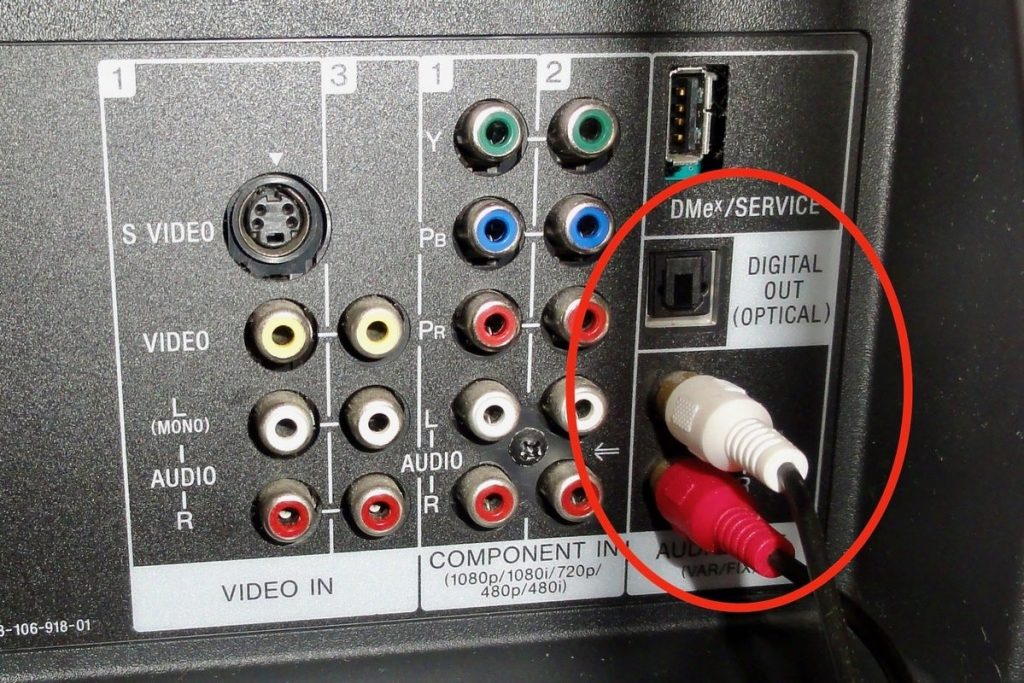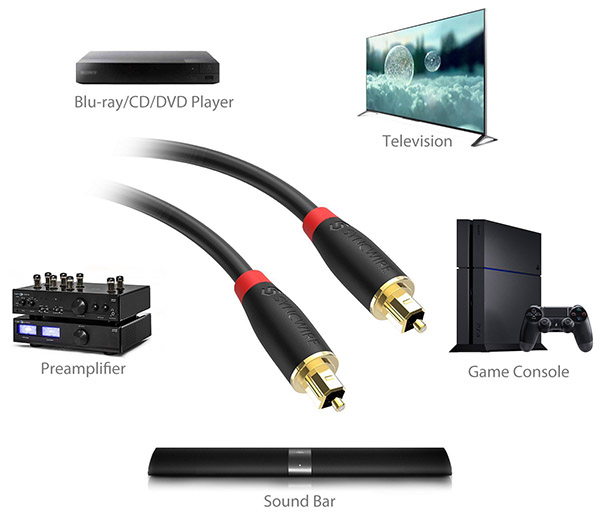Soundbars have become a popular choice for many people looking to improve their home entertainment experience. Some models, such as the Yamaha YAS-207BL, offer easy connection to your TV and high-quality sound so you can enjoy your favorite shows without cranking up the volume on your TV.
With an optical cable (included with select Yamaha models) and the right HDMI connections, you can connect your soundbar and TV for an alternative to a surround sound system. You are clicking through the Optical Digital Audio Out (Optical) Connection.
For TVs with digital coaxial audio out ports
For TVs with digital coaxial audio out ports, you will need to connect the supplied coaxial cable from the port on the back of your TV into a COAX input port on the soundbar. If only one COAX input is available on your soundbar, you can buy an additional coaxial cable for this connection. Your TV’s manual should tell you which connection type it has so you can ensure the proper line is used.
Once your optical or coaxial cable is in, you will need to connect an HDMI cable between the TV and soundbar. Make sure you always use High-Speed HDMI Cables for this connection. You will then need to change your soundbar’s input using its remote, so it uses the link you just created with your TV for sound output.
For TVs with a USB connection
For Yamaha models that offer a USB connection to your TV, this will also let you connect and play audio through the soundbar. When using an optical link, you can usually choose if the TV or the soundbar should control volume. So in some cases, you can use the soundbar’s remote to control the book instead of having to use your TV, but be aware that if you switch inputs on your TV using its remote, this will also adjust the volume.
Using HDMI ARC to connect your soundbar to a TV
Using an HDMI ARC connection is another easy way to connect a soundbar with an optical or coaxial digital audio connection to your TV. This type of connection is available if your soundbar has an HDMI input that supports ARC (Audio Return Channel). A newer TV will likely have one of these inputs if you have a newer TV. When using this type of connection, the HDMI cable sends pictures and the digital audio output from the TV to the soundbar.
Because the digital audio is not sent back to the TV, you need to ensure your TV’s settings tell it to send the audio through its HDMI ARC port. This setting is sometimes called ‘External Speaker.’ You can set this for either ‘TV Speaker’ or ‘External Speaker,’ but not both at once. If this setting is on, it will send the sound from your TV to the soundbar.
This setting would be best left off if you have a more advanced Yamaha model with a built-in AVR (such as the YSP-3090 or YHT-3920), so it doesn’t mix Theater DSP modes and volume control between the TV and the soundbar. You are connecting Using A Digital Audio Cable.
If your TV and soundbar do not have HDMI ARC connections, you will need a digital optical cable. If the soundbar only has one OPT input and your TV does not have an optical output, you can buy a second optic cable for this connection. Like the first example, you will also need to determine what kind of digital audio output your TV has. The optical cable connection is the least expensive option for connecting a soundbar to a TV because it only uses one cable versus an HDMI connection which requires 2 (one to send HD video and another for the DD/DTS 5.1 audio).
Read More: What Is Nintendo Switch? A Descriptive Guide About How to Set Up Nintendo Switch
Connecting to a TV using an optical digital audio cable
If your soundbar has one OPT input, the digital optical cable must be connected to this port. The other end of the line goes in an OPTical output port on the back of your TV. These are sometimes labeled ‘Digital Audio Out’ or ‘SPDIF.’ Make sure you use a High-Speed Optical cable for this connection. If your TV and soundbar both support ARC (Audio Return Channel), the OPTical cable can be connected to either the TV or the soundbar, but not both at once.
Using an HDMI cable with an ARC connection is another way to connect a soundbar with digital audio out ports directly to a TV. As with the wired connection, the digital audio comes back to the TV, and you will need to make sure your TV’s settings are telling it to send the audio through its HDMI ARC port. This setting is sometimes called ‘External Speaker’ or ‘TV Speaker.’ You can set this for either ‘TV Speaker’ or ‘External Speaker,’ but not both at once. If this setting is on, it will send the sound from your TV to the soundbar.
Connecting using an HDMI cable with ARC connection
If your TV and soundbar have an HDMI ARC connection, you can use an HDMI cable with ARC for this connection. The digital audio output goes to the TV, so no unique settings are needed on the TV. However, if it is set to ‘TV Speaker,’ you will need to change this setting because it would send the audio both ways and result in a lower volume level coming from the soundbar.
Connecting To A TV Using An HDMI Cable With ARC Connection
If your soundbar has one or more HDMI inputs with ARC, the HDMI cable with ARC connection can be connected to either the soundbar or TV but not both at once. If your TV doesn’t have an ARC input, you will need to use a digital optical or coaxial connection instead.
Connecting Using A Wireless HDMI Transmitter/Receiver
If your soundbar has one or more HDMI inputs, a wireless HDMI transmitter/receiver can be used to connect the soundbar directly to your TV. If your TV doesn’t have an ARC input, you will need to use a digital optical or coaxial connection instead.
Wireless HDMI Transmitter/Receiver Connecting To A TV Using Wireless HDMI Transmitter/Receiver The wireless HDMI transmitter/receiver connects to the soundbar’s HDMI input other end goes in either a digital optical or coaxial port on your TV. You can set it from any device when you want to send video from the TV through the wireless transmitter/receiver, but there are a few things you need to know when using a soundbar.
First, the soundbar must be turned on to receive the audio signal. Second, you need to make sure what kind of digital audio output your TV has, either optical or coaxial. If your TV only has one choice for digital audio out, that is the only type you can connect to the wireless transmitter/receiver. Generally speaking, if your TV were made within the last few years, it would most likely have an HDMI ARC connection instead.

